Mont Saint-Michel
#stmichel



On a whimsical trip to Paris typical tourist attractions featured very low on my priority list. I wanted to experience France outside of Paris. A day-trip from Paris, but where? Mont Saint-Michel drifted in my vision.
In the 8th century Bishop St. Aubert had multiple visitations by the Archangel St. Michael, the heavenly warrior with a golden sword. He also appears in the Quran as Mikhail in Arab, in similar role as a leader helping the church’s army against the heathens and the Devil. Dare we ask if an army of Christianity and an army of Allah march against each other, whom will St. Michael favour?
The granite islet about a kilometer off the coast of Normandy lies in a salt flat. After Bishop Aubert had the visitations from St. Michael, an oratory was built there. After another two hundred years, the abbey was built and Benedictine monks were installed in the abbey.
I was a little hesitant about the 14-hour trip, of which the major part is spent in the bus to and fro. Another reason was of course, I had to get up early enough, have something to eat or at least drink some coffee, take a shower, take a metro to the bus station, and all of these before 7 am! Before I could change my mind again, I bought a ticket for the adventure the next day.
Mont Saint-Michel is one of the most important pilgrimage sites in France. Today The Mont is connected to the main land with a causeway. Before the causeway was built, pilgrims had to wait for the low tide to cross over to the mount. There are stories of death, if the timing was not correct. Because it is said that, during the spring tide, the water rushes in like mighty horses! Because the pilgrims reached the Abbey after a long wait at the mainland, tired and famished, the huge heavy omelets became famous as full meals. They still are famous, and pricey, but I had to skip them because of time constraint. All the eateries command lovely view of the salt flat and were full.
This being an UNESCO Heritage Site, surrounded by a fragile eco-system of the salt flat, only electric buses can ply on the causeway.
From afar you can see the steeple of the abbey, but as you come closer, the sheer magnitude of the engineering feat captures your imagination. In the midst of a treacherous low sand bed, stands a mount on which is built a 300-feet tall stone abbey buttressed using the natural strength of granite as well as the stone walls, which from a distance seems to have sprouted from the granite base. Archangel Michael had chosen his own abbey properly. Here St Michael pointed his finger to a small but impregnable islet, which was able to withstand the 100 years’ war, and never capitulated. Even a mere mortal can see for miles on all sides and the enemy has nowhere to hide, except under the rising tide.
The Abbey was converted to a state prison during the French Revolution, when all religion was banned, and remained so for over a hundred years. Only in the late nineteenth century it was classified as a historic monument and monks were allowed to return here.
I strode inside the gate of the township that grew around the Abbey, through the narrow cobble-stoned pathway and made my way towards the main structure. Diners, curio shops, cafes, small museums, pubs and sweatshops galore. On one side of the street rises the natural granite hill and the stone-reinforced outer wall of the abbey, on the other side, beyond the shops, you see the white seabed, the causeway and the electric buses shuttling.
Tourist literature warns that you have to climb up long vertical stairways to get into the abbey. The first open space you come after huffing and puffing over the stairs and ascending alleys is a portico over the Normandy sea. Beside the portico is the old chapel hall. The cavernous hall is almost three stories high and made of bare blocks of stone. The whole atmosphere inside the hall is Spartan. But when you are visiting a monastery, what else can you expect?
As you ascend higher and higher, more and more of the sea become visible. I could see the tide was trickling in. Far away there were one or two small mounts shimmering in the midday sun. The day was alternately sunny and cloudy. The white sand bed shimmered in various shades of gray, silver and clay. The atmosphere was clear, the glare hurt my eyes. A smart wind rose and bluish clouds rolled in.
Saint-Michel has a beautiful cloister on the top, a small rectangular lawn, surrounded by slim arches on raised balustrade. It is open on three sides to the sea. The sheer drop to the sea is several hundred feet. The stone parapets are impossible to climb. They are impregnable to cannons because of the natural advantage of the site.
The tourists inside the abbey are asked to follow a marked path inside. From the cloister, the path takes you down below and through another stark hall of many arches. It is a magnificent hall but without any decoration. Whatever small carvings are there on the top of the supporting pillars, are crude, which gives the hall an austere look. Both the cloister and the hall are the places where the monks gathered for prayers, quietude and peace.
Outside of the monastery, you can roam around according to your pleasure. I saw many elderly couples and family with small kids, who have come to spend the whole day on the Mont. There are accommodations on the mainland, which you can rent. The Mont is open till night and it is lighted up after sunset. For a quiet weekend with family, this is a beautiful place.
Coming back to the bus bay, I met a few delightful creatures in front of a coffee shop, bought a big black coffee, a sandwich and pastry, and then settled contentedly in my seat to wait for the other passengers to return.
Comments
Reply here
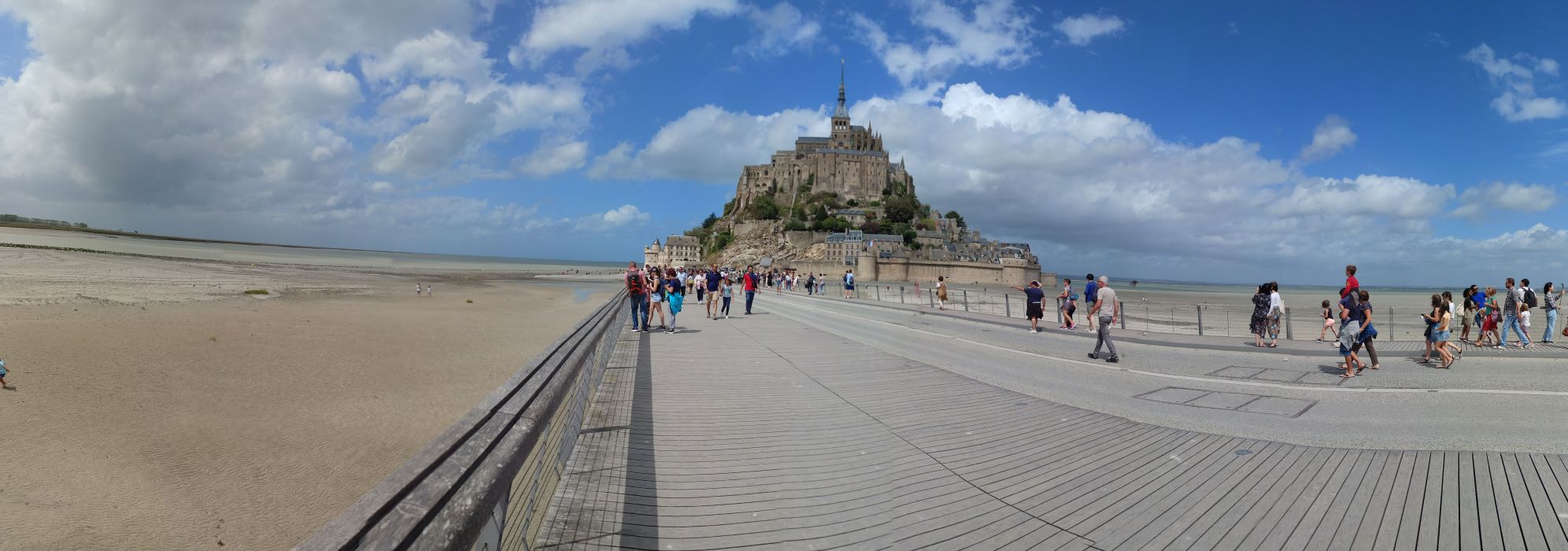
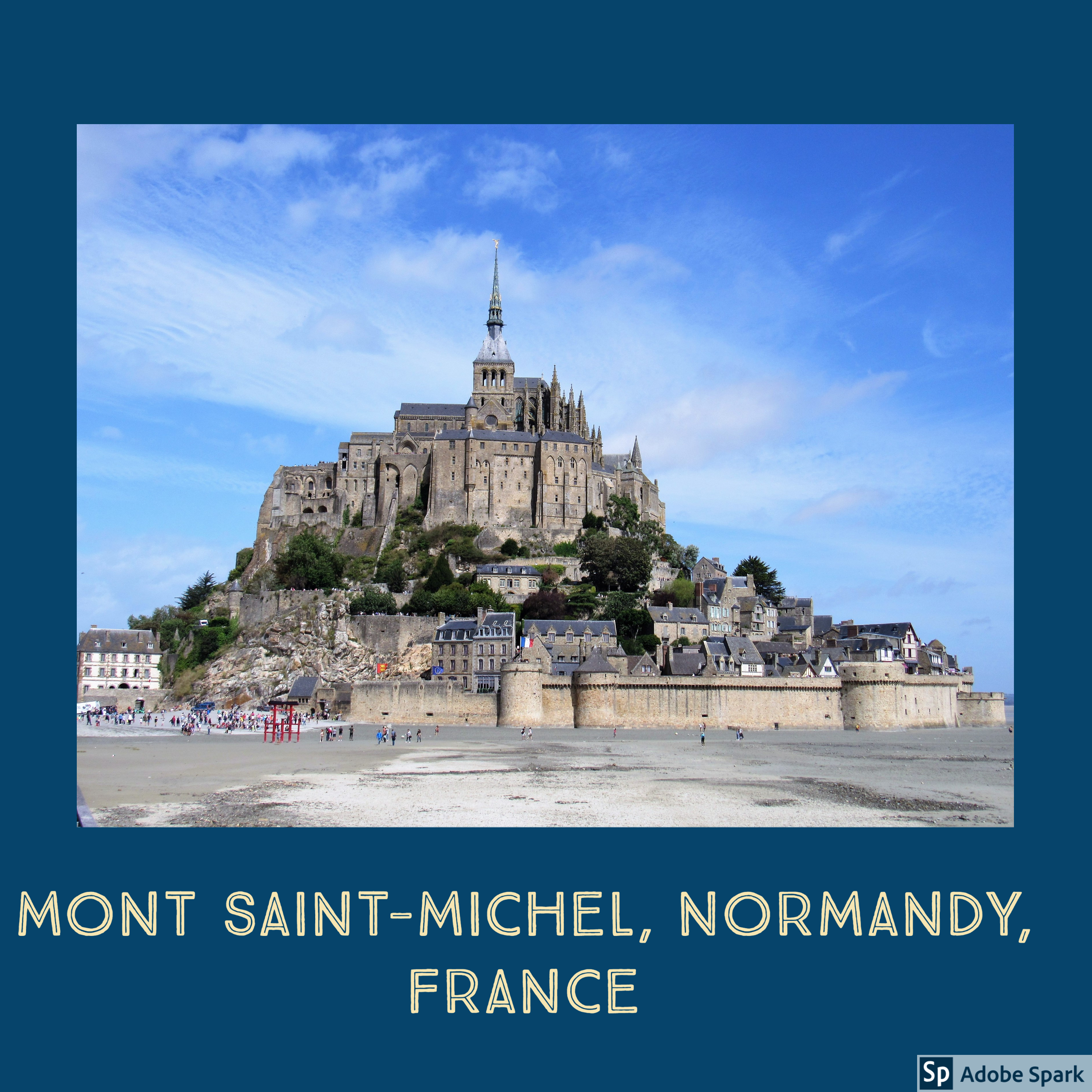
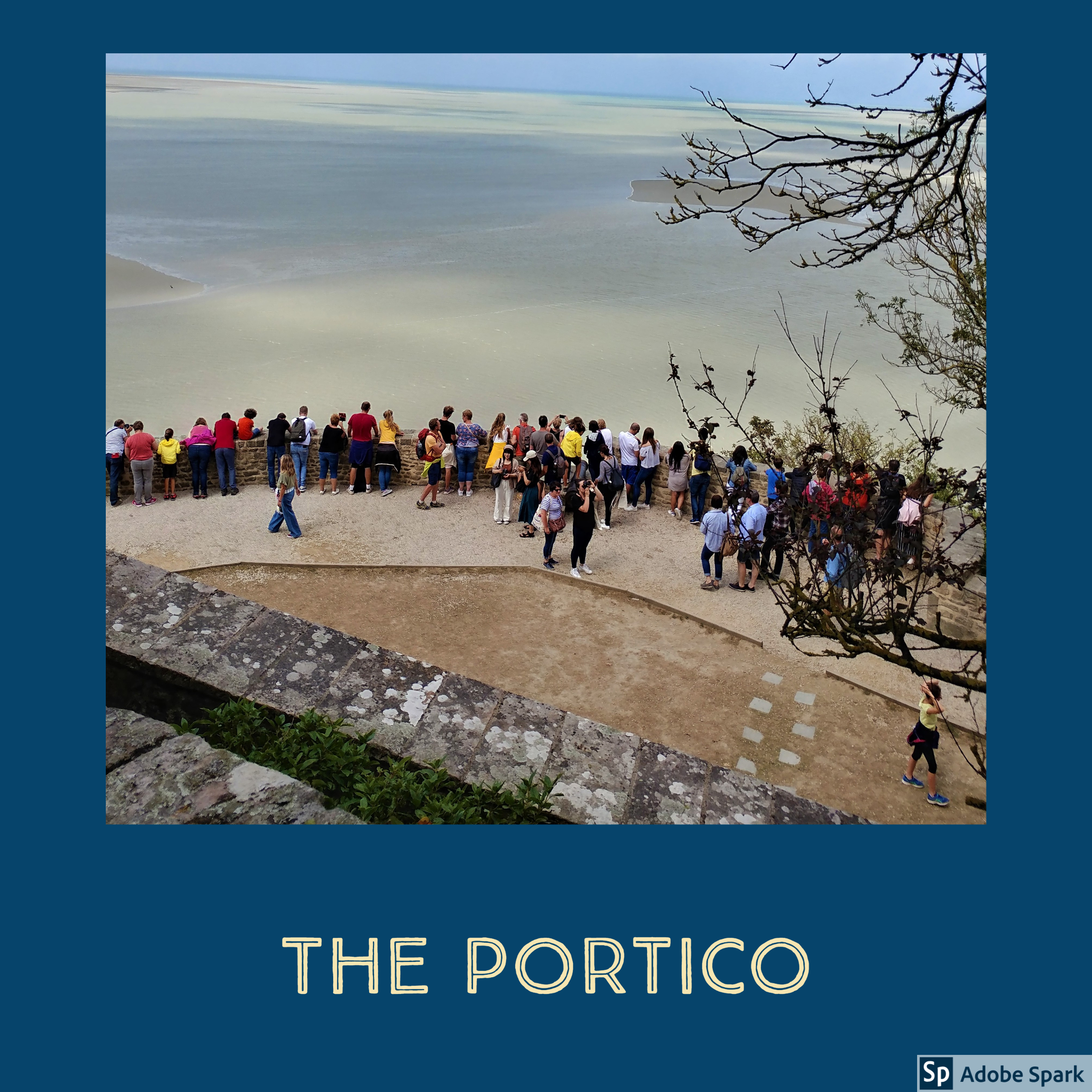
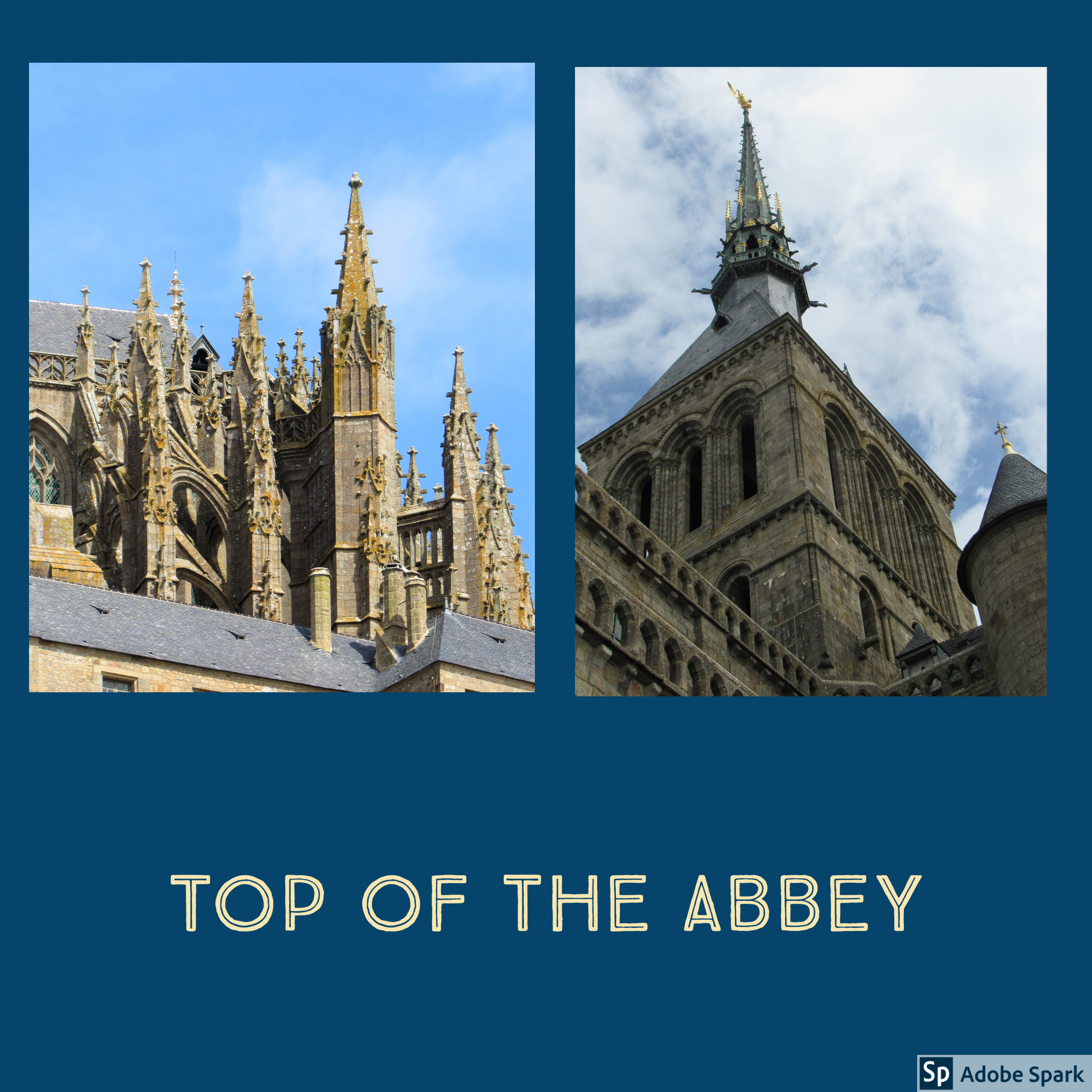
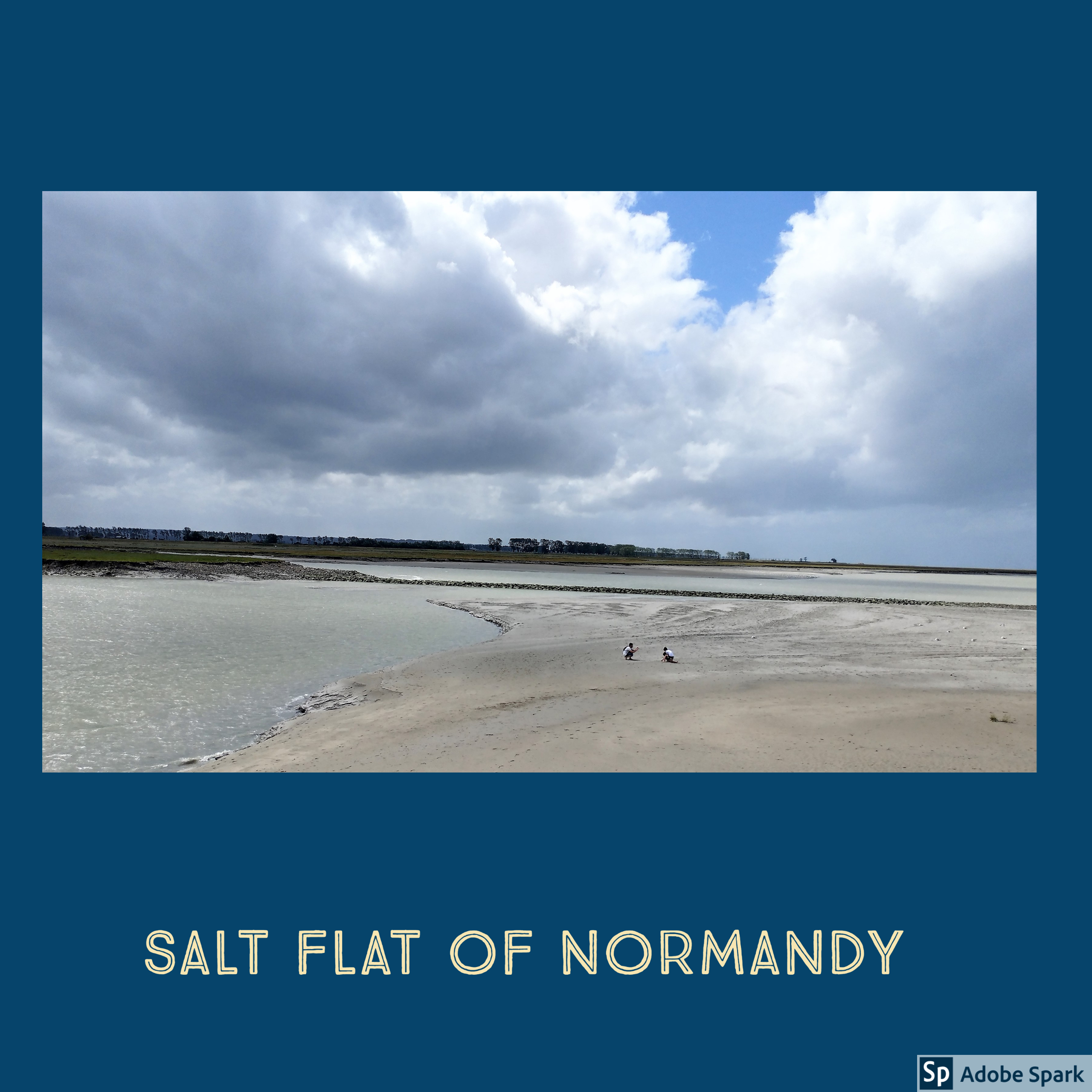
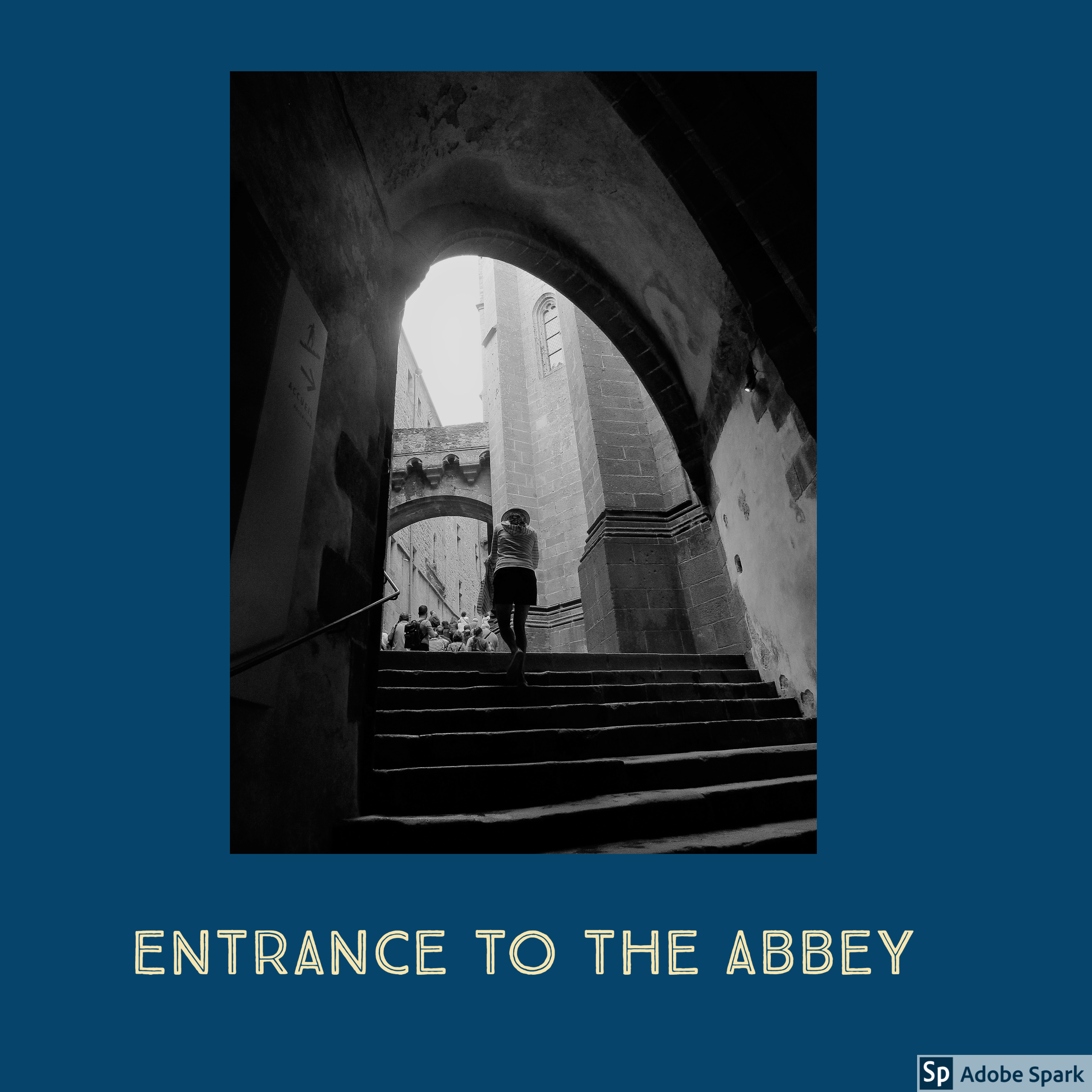
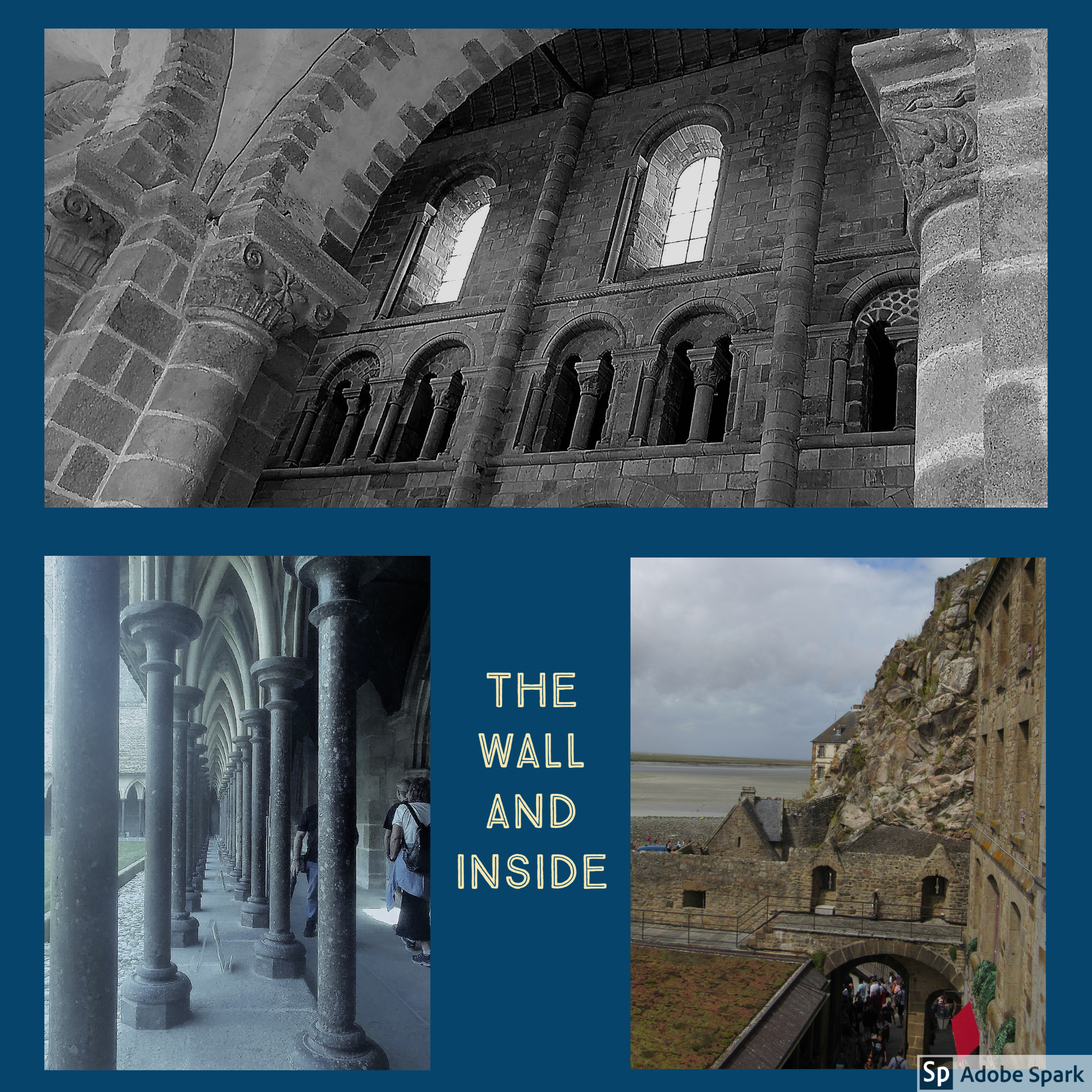
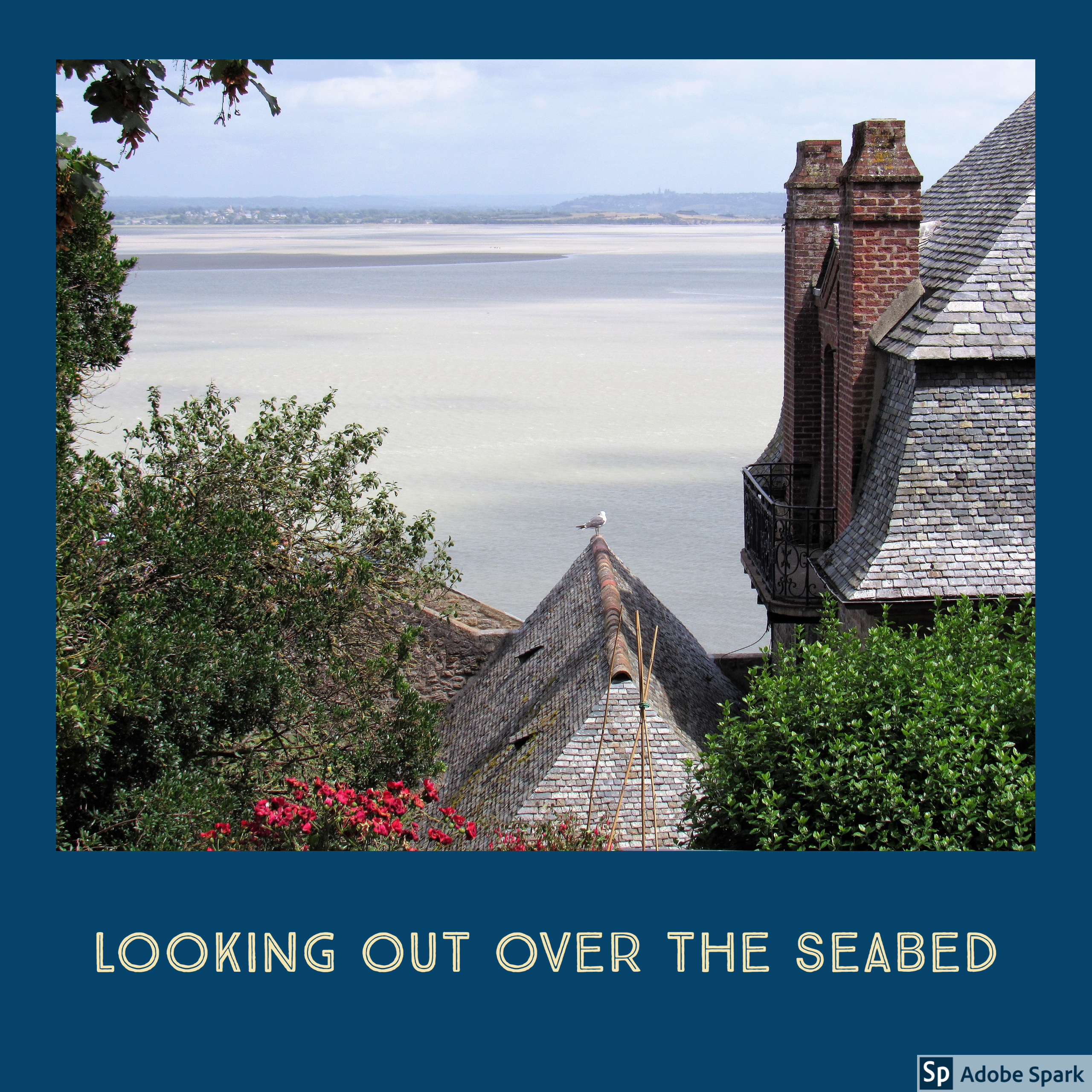



Mont Saint Michael
And you visited this place all alone. Wish I knew about this place when I visited Paris
Soma
19-07-2020 02:40:05